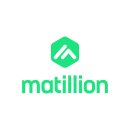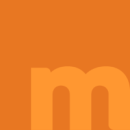Remote, by definition, means distant. And today’s workforce has been largely remote, whether by choice or not, for the better part of 3 years.
Working remotely has its perks — no more commute time, more personal time, more flexibility overall — but for many, the challenges of being physically distant day in and day out can build up in sneaky, unforeseen ways.
“The pandemic reinforced that flexibility is important to people. It also reinforced that there is a level of connection you can’t fully achieve remotely,” said Amber Farris, director of growth, renewals and retention at OrthoFi.
Enter: the hybrid work environment. A middle-ground solution to improve employee engagement and wellbeing, hybrid workplaces retain the benefits of working remotely while bringing back the in-office collaboration and engagement dynamic.
Employers that embrace hybrid work arrangements can set themselves apart from the competition as they seek top talent. Not all hybrid work environments are created equally, however, and companies can distinguish themselves further by committing to a long-term hybrid plan. A global Cisco survey from 2022 noted that only one-fourth of employees felt their organization was “very prepared” for a hybrid working future.
We spoke to HR leaders at simPRO Software Group, Monigle, OrthoFi and three other Colorado-based companies to learn more about how they have found success in a hybrid work environment and what distinguishes their flexible arrangements from others.

Strive Health is on a mission to transform care for kidney disease patients by identifying patients sooner and delivering the right care at the right time. Strive balances a hybrid and remote environment with delivering a high quality of care to patients.
Tell me about your hybrid work arrangement: How often are employees expected to come into the office? What makes your arrangement unique in the tech industry?
At Strive Health, we believe in our people and recognize that they do their best work when they have a say in how, when and where they work. We have Strivers across the country, including remote, hybrid and in-office corporate and clinical staff. Our goal is to provide as much freedom as possible while maintaining the highest quality care possible for our patients.
Our Denver office is always available for local or visiting Strivers, and we continue to look for ways to bring people together in person for teambuilding and relationship development. I am located in the Salt Lake City area, and I encourage my local team to gather in the office every Thursday. Our counterparts in Denver do the same on a day that works for them.
Many technology companies have a similar model to Strive and place an emphasis on meeting employees where they are at. I believe the technology industry as a whole understands that employees are unique individuals and flexible work environments allow for increased quality of life and productivity.
Ultimately, we want our Strivers to be productive, healthy and fulfilled. Supporting remote and hybrid work enables that.”
Why did you choose this arrangement?
Strive works with healthcare providers, medical groups and payors around the country, and our people and products touch thousands of unique patients. From the beginning, we recognized the need for a dispersed workforce and have the infrastructure to support largely remote and hybrid work. Our model is unique in that flexibility and remote-friendly work is part of our DNA.
Ultimately, we want our Strivers to be productive, healthy and fulfilled. Supporting remote and hybrid work enables that.
What lessons from the pandemic and remote work in general have influenced your hybrid work model?
Strive was founded pre-pandemic in 2018 when hybrid work was largely accepted in the tech space but fully remote work was less common. Our founding Strivers embraced hybrid and remote work while emphasizing the importance of coming together at key times to remain a close-knit team.
During the pandemic, Strivers demonstrated right away that a remote work environment was not only possible but highly productive. Personally, I was able to spend a lot more time with my family while working remotely, and this was incredibly important to me especially in times of uncertainty. As an industry and a nation, the pandemic has shown us that we can work from home, emphasize quality time with loved ones, prioritize personal wellness and still produce incredible results that change the lives of Strive’s patients.
OrthoFi provides tech-based solutions to help orthodontic practices manage invoicing and patient acquisition through its cutting-edge software. OrthoFi employees spend 3 days a week in the office and two at home, and are given the flexibility to decide their own schedules.
Tell me about your hybrid work arrangement: How often are employees expected to come into the office? What makes your arrangement unique in the tech industry?
Our business-to-business customer support team members are eligible to work in the office 3 days a week providing they are meeting or exceeding individual performance standards. We have built-in flexibility to choose your work-from-home days. As part of this arrangement we create team engagement through in office events. Our leaders and team members work together to come up with new ideas where members can interact, bond and have fun. Our team has enjoyed things such as pajama breakfasts, themed potlucks, office provided lunches and performance-based competitions.
Why did you choose this arrangement?
We strive to have highly effective teams. We believe culture, engagement and employee happiness are key parts to success. The feedback we received from many team members was that they enjoyed the flexibility of working from home, but missed the culture that in-person provides. Since deploying the hybrid model we have seen improvement in collaboration, growth and team-first mentality. No matter how big this challenge the team knows how to rally and work together to accomplish team goals.
Since deploying the hybrid model we have seen improvement in collaboration, growth and team-first mentality.”
What lessons from the pandemic and remote work in general have influenced your hybrid work model?
The pandemic reinforced that flexibility is important to people. It also reinforced that there is a level of connection you can’t fully achieve remotely. During the pandemic we focused on digital engagement with the team through chat, virtual meetings and virtual happy hours. This worked well, but adding back in the office engagement has increased team morale and allowed us to work more effectively together and have fun along the way!
Over 200,000 users look to simPRO Software Group for field service software solutions for project management, asset management, job management and more. The company has adopted a 4-day work week with time spent in the office and at home.
Tell me about your hybrid work arrangement: How often are employees expected to come into the office? What makes your arrangement unique in the tech industry?
The hybrid work arrangement at simPRO is called “Flex4” — a 32-hour work week with a 40-hour paycheck. It allows our employees to work a shortened week both at home and in-office with the understanding that employees meet all productivity, customer and teammate support goals.
Our Flex4 program was designed with our people in mind. The program aims to create a flexible work environment that suits their needs. For some of our team, it’s a flat 4four-day week with some days in the office and some days at home. For others, it’s a blended approach with half days on Monday and Friday. Some employees have chosen a shorter day but will remain working 5 days a week.
Why did you choose this arrangement?
The pandemic changed everyone’s perception of “work” and what the in-office work experience should look like. Employee expectations of work-life balance also changed. We at simPRO had to adjust to this new way of thinking. Based on our employee feedback, the leadership team adopted Flex4.
The decision to implement Flex4 highlights simPRO’s industry-leading belief in modeling a human-centered approach to leadership. We lean into the strong values that guide our business — “We Care,” “We Are One Team” — when faced with change and challenges. We strongly believe in doing the right thing by our employees. We also believe that the future of work puts the employees at the forefront of strategic decisions by partnering with them on decisions that affect the employee experience as well as their mental and physical wellbeing.
The future of work puts employees at the forefront by partnering with them on decisions that affect the employee experience as well as their mental and physical wellbeing.”
What lessons from the pandemic and remote work in general have influenced your hybrid work model?
Perhaps the biggest lesson we learned from the pandemic and remote work is that when you invest in your employees’ mental and physical wellbeing and truly let your employees thrive, the company in turn thrives. We treat our employees like adults and trust in their commitment to simPRO to create a work schedule that lets them define what work-life balance means. By truly taking care of your employees, listening to them and showing that you value their input and work, it will come back to the company by way of dedicated commitment, retention and exceptional customer service and support.
Matillion’s user-friendly, cloud-native data integration platform helps clients around the world transform data into valuable insights. Matillion allows employees to choose when they come into the office and when they work remotely.
Tell me about your hybrid work arrangement: How often are employees expected to come into the office? What makes your arrangement unique in the tech industry?
Our arrangement is that employees are free to choose whether they work from home, work from the office or a combination of both. We have not set a fixed expectation on coming into the office.
We are not remote first — we do believe that face-to-face time is still important and that connecting people across teams, functions and geographies helps to drive our business. We create events in the offices and outside to encourage our team’s attendance. These can be companywide or from teams.
We believe that hybrid and flexible working needs to be mutual and respected. We are comfortable with people flexing hours and working from home or the office, however there are some company meetings that are mandatory, for example the CEO’s weekly 15-minute check-in, the company all hands or a team meeting. They can be joined via Zoom but the team’s attendance is expected.
We empower people leaders to make their own decisions around team attendance through organizing their own meetings and mini events.
We had a real desire to take learnings from the pandemic where people benefited from working from home but still missed that social element of the office.”
Why did you choose this arrangement?
We had a real desire to take learnings from the pandemic where people had benefited from working from home in terms of their family time, caring responsibilities or even exercise and wellbeing but still missed that contact and social element of the office.
We did not want to mandate people to return to the office. We hire grown-ups and want them to make their own decisions about what works for them. We do expect in return for this arrangement that they are present when they need to be and willing to travel for team or company meetings when they are requested to.
We are excited to be investing in two new offices in our dual-headquarter cities, Denver and Manchester, United Kingdom, in 2023, and we expect our office provision to be a real pull for people to attend the office again in a way that suits their lifestyle.
What lessons from the pandemic and remote work in general have influenced your hybrid work model?
We have learned that people want the best of both worlds and that post the pandemic they can have that in many organizations.
Meeting fatigue is real and we constantly need to consider how to improve on this. Gone are the days when people craved social connection via Zoom.
We have learned to be more inclusive, as everyone is more remote than we ever were before.
We expect people to update their profiles if they are walking the dog, eating lunch and so on. This helps people to respect their time and accommodate everyone’s choices.
We need to plan for social time. It won’t always be in the office, sometimes it needs to be over Zoom, an online escape room or a meeting held in a park. Our annual companywide Super All Hands meeting is more important than ever as it’s the one time every year when everyone can come together and really experience our culture and build connections.
KPA offers software and solutions that help mid-sized organizations identify, fix and prevent workplace safety and compliance issues. While KPA is a remote-first company, its new offices are based on employees’ needs and the desire for face-to-face collaboration.
Tell me about your hybrid work arrangement: How often are employees expected to come into the office? What makes your arrangement unique in the tech industry?
KPA operates in a remote-first work arrangement, where day-to-day work is typically done remotely and our office space is available for people to come together for face-to-face collaboration. KPA was in a unique situation when the pandemic hit, we were already in the market for a new office. With that in mind, and as we responded to the evolving pandemic, we took a fresh look at the needs of the business and our people, supporting collaboration, cross-departmental communication and team building and bonding.
This new space has a desk hoteling system for in-person days, but we do not require a set number of days per week in the office. We have employees that are in the office five days a week, employees that are in the office as needed for project-based work and everything in between. There is a level of trust and autonomy that KPA has built for our teams, balancing the benefits of remote work and working together in person.
There is a level of trust and autonomy that KPA has built for our teams, balancing the benefits of remote work and working together in person.”
Why did you choose this arrangement?
We saw many benefits for our employees with a remote working environment. People are more productive and allowed a greater level of flexibility in their day-to-day lives. Our goal was to continue this while reintroducing in-person gatherings and spontaneous idea sharing — the things we were missing with a fully remote environment. With our new office space, we pivoted from looking for a large space to hold all employees five days a week to looking for a space that met the new needs of our hybrid workforce.
What lessons from the pandemic and remote work in general have influenced your hybrid work model?
We saw different needs from our employees during the pandemic. We saw increased productivity and a new approach to flexibility when we could not be in an office. We also found that as the pandemic continued, employees wanted to see each other and were missing cross-department communication. In order to avoid the buildup of silos, we opted to center our design around getting people together for a purpose. We surveyed employees to gain insight into how they felt about exposure to Covid-19, working from home and communicating with each other. The results led us to our new spaces designed for interaction.
Established in 1971, Monigle is one of the country’s largest independent brand consultancies and offers strategy, design, research and the world’s leading brand-asset management platform. Monigle’s hybrid environment is rooted in flexibility and trust in an employee’s self-defined needs.
Tell me about your hybrid work arrangement: How often are employees expected to come into the office? What makes your arrangement unique in the tech industry?
Aside from a few key administrative functions, we do not require employees to come into the office. We do still have office space that remains open for those who do choose to come in, but it is entirely up to individuals based on what is most optimal for them. On certain days we offer free lunch and happy hours to support those who want to re-energize those human connections, and have invested in technology to better enable remote work. Rather than trying to figure out how to get people back to the office and what the office of the future should look like, we have spent most of our time leaning into the hybrid and remote world and finding ways to optimize that as much as possible to maximize flexibility.
Why did you choose this arrangement?
Our business model follows the virtuous circle, meaning that we first and foremost focus on happy employees. If our people are happy, the work is better and then our clients are happier. Through surveys and listening sessions we heard loud and clear that flexibility in how people work is critical to people’s happiness. Furthermore, we now have employees spread across the country so maintaining a flexible work life allows us to reinforce a culture of “one Monigle.” Another key factor is understanding the problem you are trying to solve. In this case, our culture scores have improved, the quality of work product has improved, our clients are happy and we had our best company performance in history in 2020 and 2021, so there really is not a problem to be solved related to hybrid work.
What sets Monigle apart is how we put happy people and humanity at the center of every business decision. We listen to our employees, and we believe we are successful when every single employee believes they can make Monigle the type of company they want it to be. Every person can have a real impact here, and we will continue to make decisions based on our people and culture first.
We heard loud and clear that flexibility in how people work is critical to their happiness. We put happy people at the center of every business decision.”
What lessons from the pandemic and remote work in general have influenced your hybrid work model?
Again, a big piece is really understanding the problem you are solving — and if there is even a worthwhile problem to be solved. You also need a lens to help guide your decisions, whether that is your purpose, vision, brand and so on. Otherwise the decisions you make can potentially come across as inconsistent. For us, it all came back to our focus on happy people. But once you make those decisions, you have to commit to it. It means you have to trust people, give people the benefit of the doubt and lean into your decision.
For us that meant investing in technology that better enabled remote working and collaboration, changing certain processes and meeting schedules, and so on. For example, a big thing that everyone has been talking about is the increase in meetings. We instituted an updated approach to meetings, including optimizing the way meetings are run, introducing meeting-free hours and implementing 5- and 10-minute late starts to give people moments of humanity to get up and stretch between meetings. If you don’t try to make it work, it won’t.

















